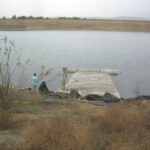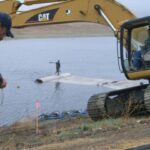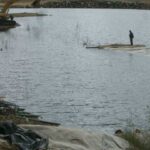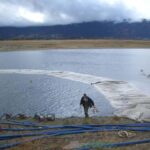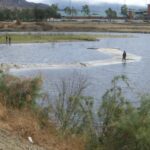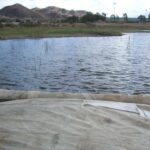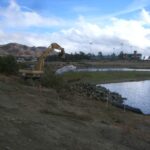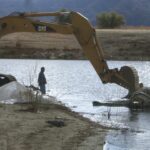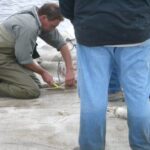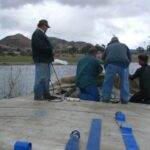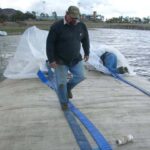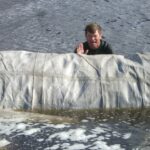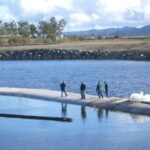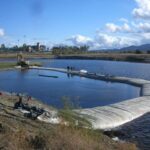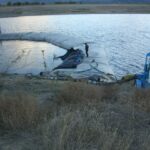
Several AquaDams were strategically deployed in an "L" shape configuration to isolate a specific section of shoreline within Lake Elsinore, California. The initial AquaDam utilized was a single closed-end (SCE) unit, distinguished by its black fill-tubes and white outer layer material. In order to properly install a SCE AquaDam, it is essential to have a starting bank that maintains the open end at a higher elevation than the full height of the AquaDam. The open end and fill-tubes of an SCE AquaDam must remain elevated above the dam's full height along its designated path. The AquaDam will only reach its maximum height at the lowest point along its designated path.
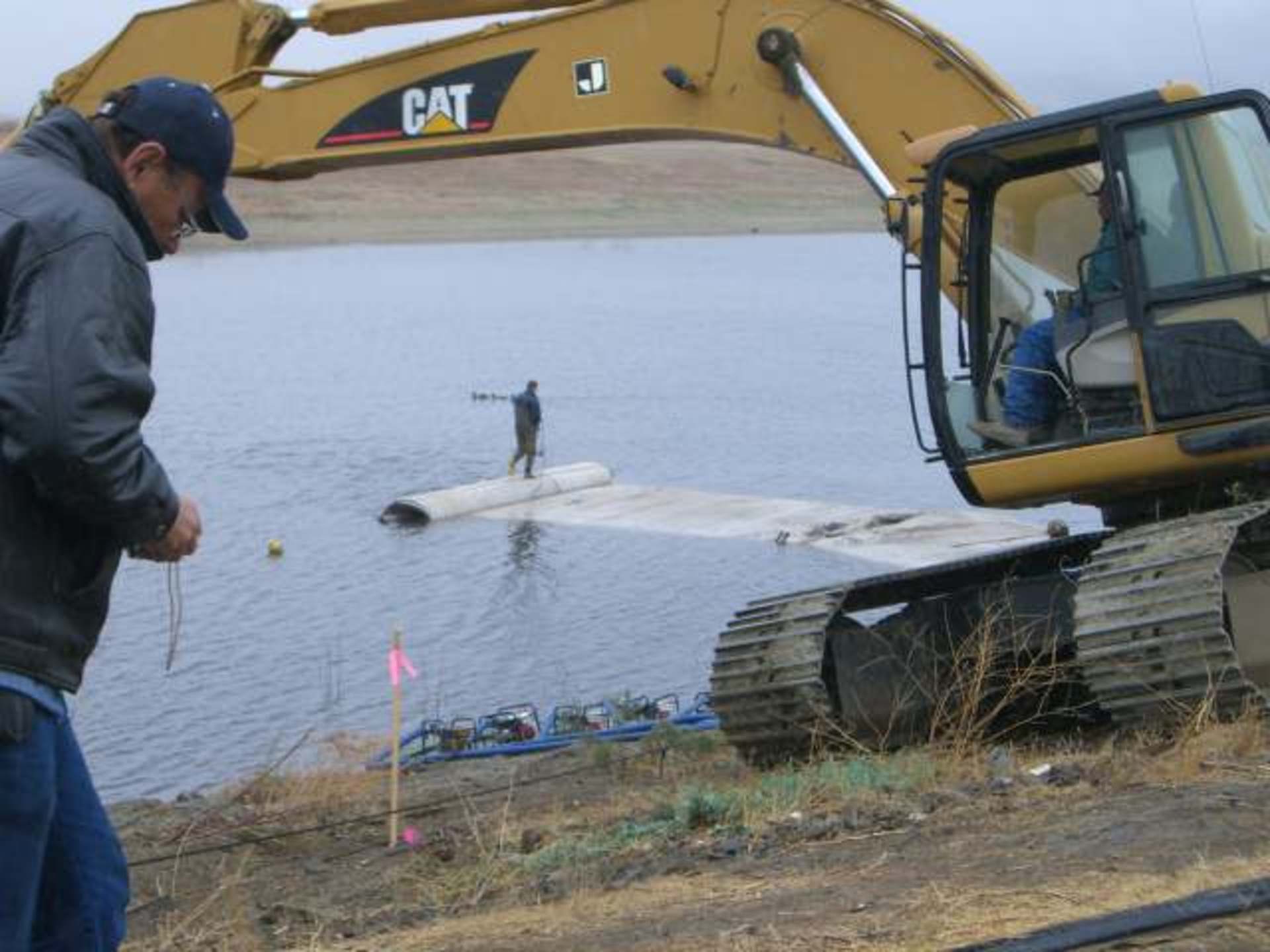
As the AquaDam is filled with water, the pressure from the water inside the fill-tubes pushes on the roll end, causing it to unroll. As the water is falling inside an AquaDam, it is seeking the lowest path to travel towards pulling the material to the floor of the lake.
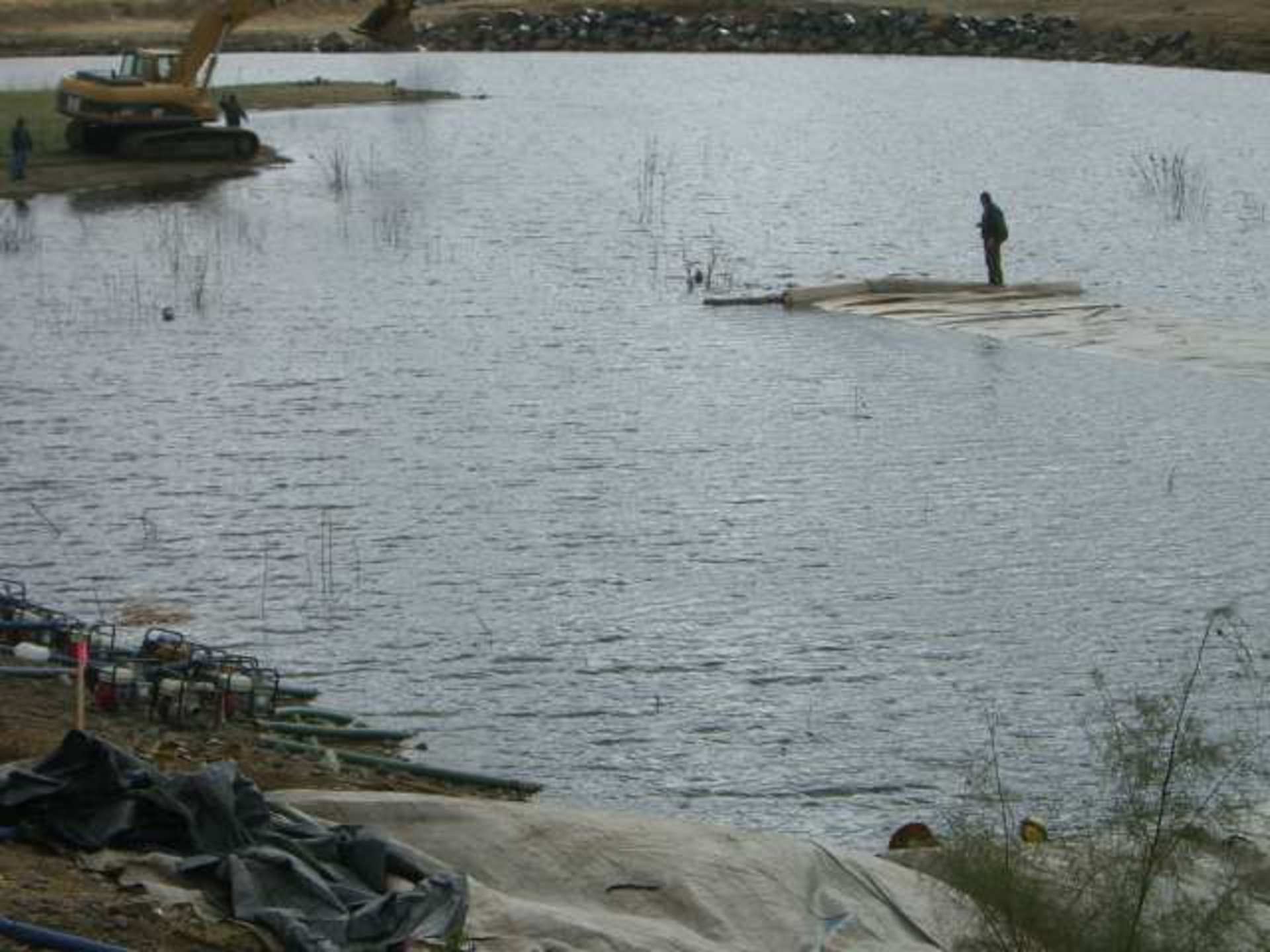
The first SCE AquaDam has been nearly fully deployed. Due to the minimal current in the lake, the AquaDam requires less head above the water level to maintain its position as it is being installed.
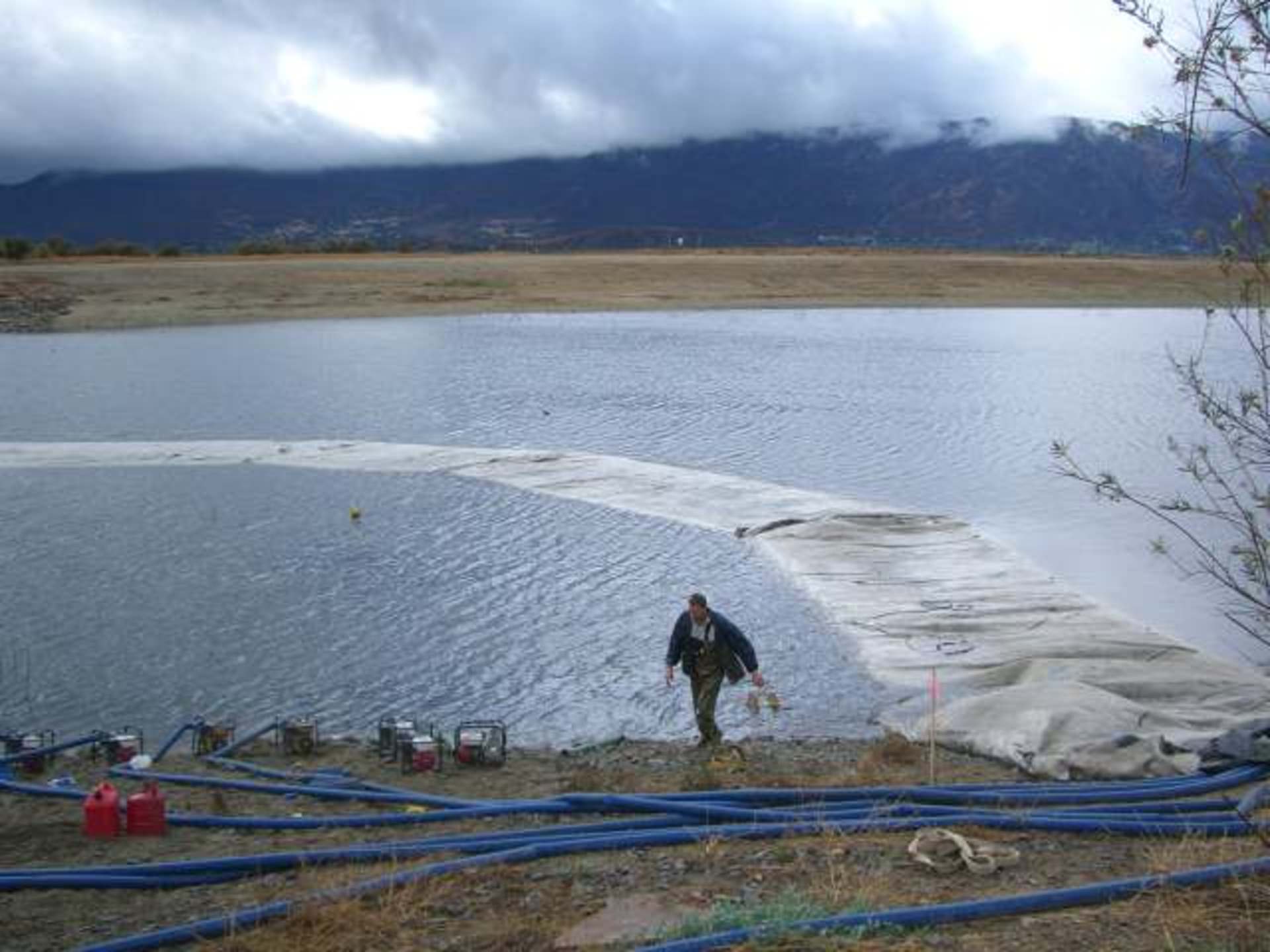
AquaDams are constructed from lightweight and flexible materials, allowing them to be easily manipulated into various configurations.
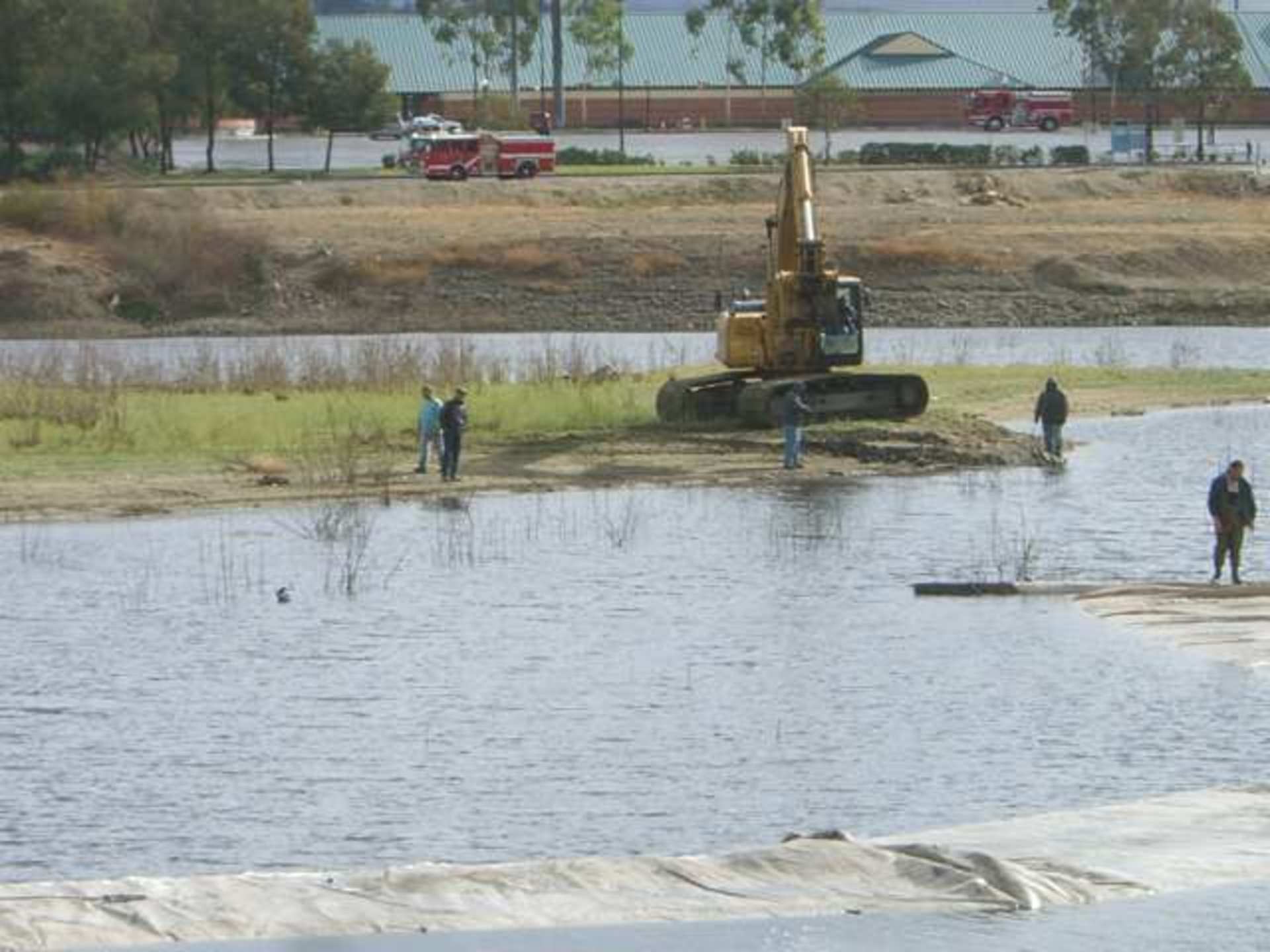
The amount of pumping power utilized will directly impact the speed at which an AquaDam can be filled with water. For optimal results, it is advised to utilize equal pumps in each fill-tube.
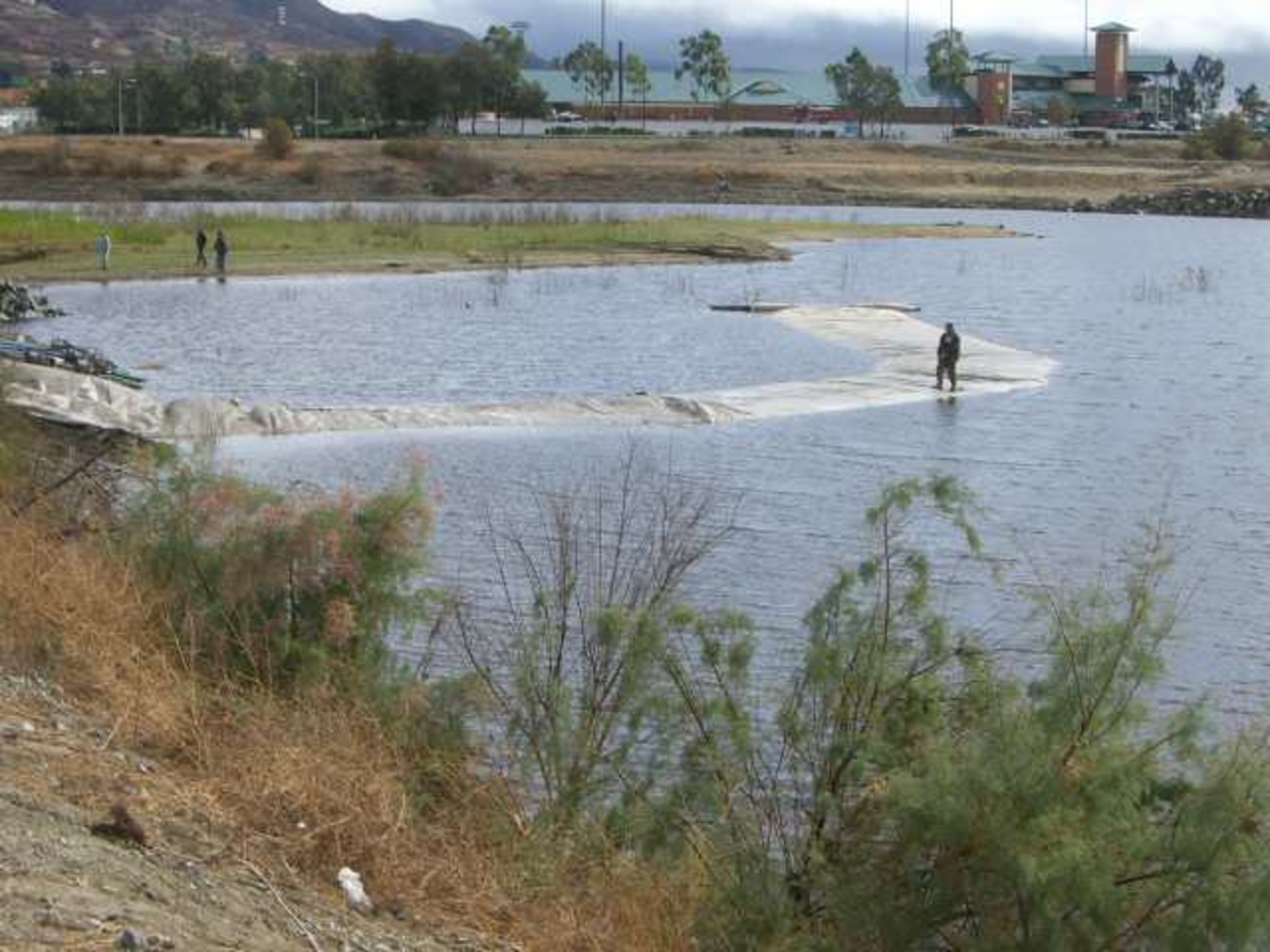
The Diamond Stadium of Lake Elsinore is visible in the background.
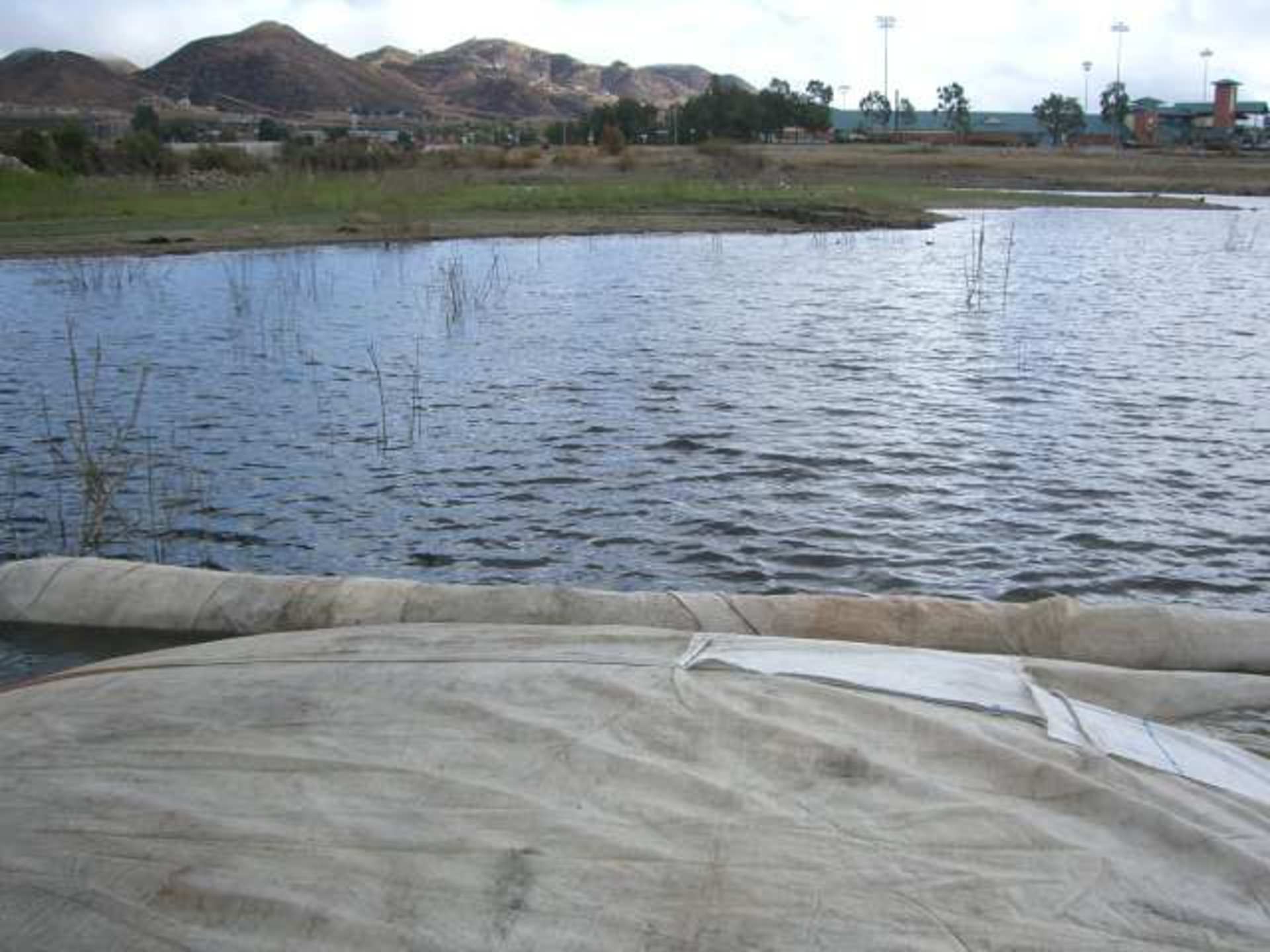
The workers have left the connection collar still rolled up on the log that the AquaDam was shipped on, until they are ready to make the connection.
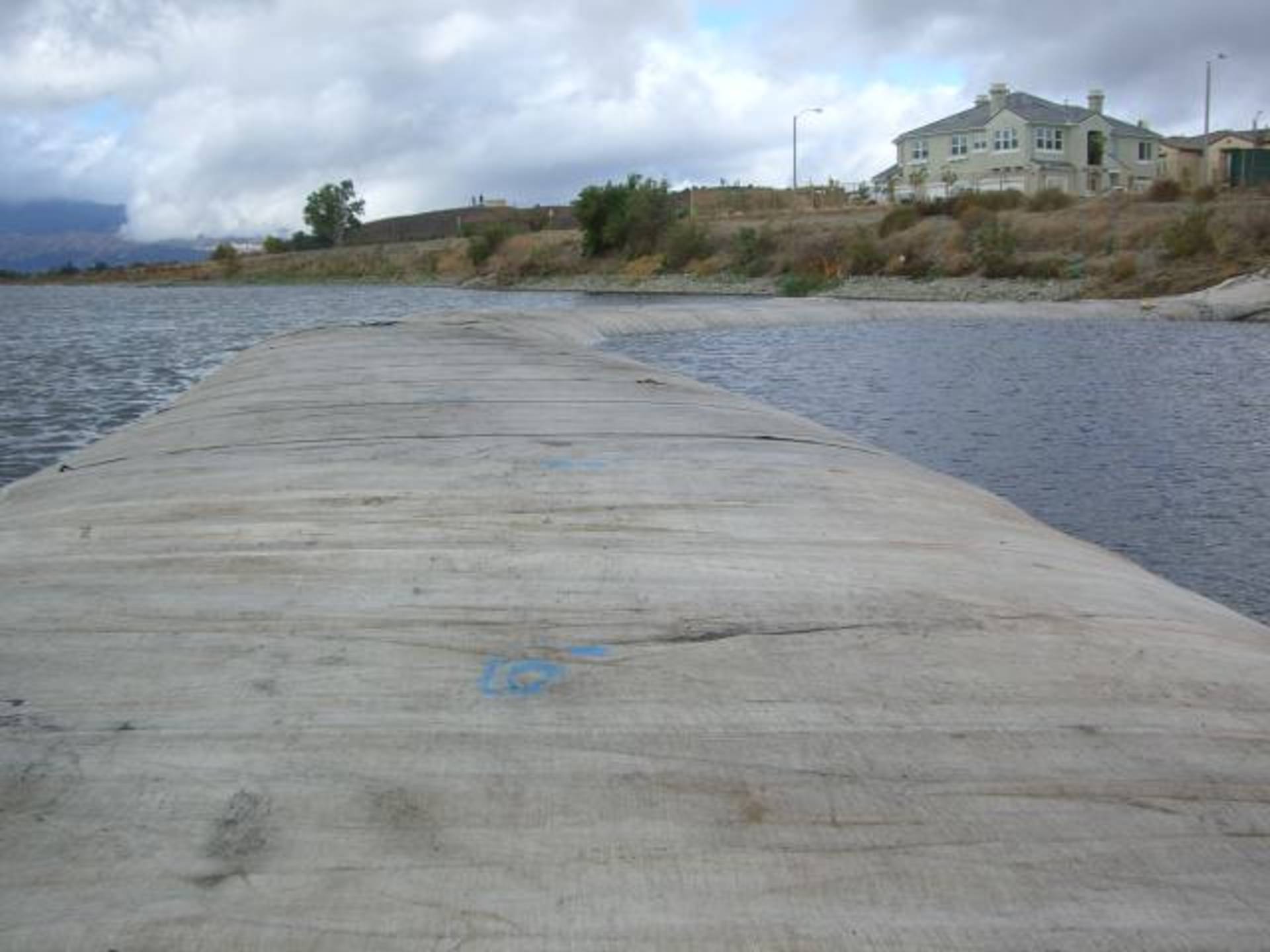
The first SCE AquaDam is gaining head above the surrounding water and getting more full.
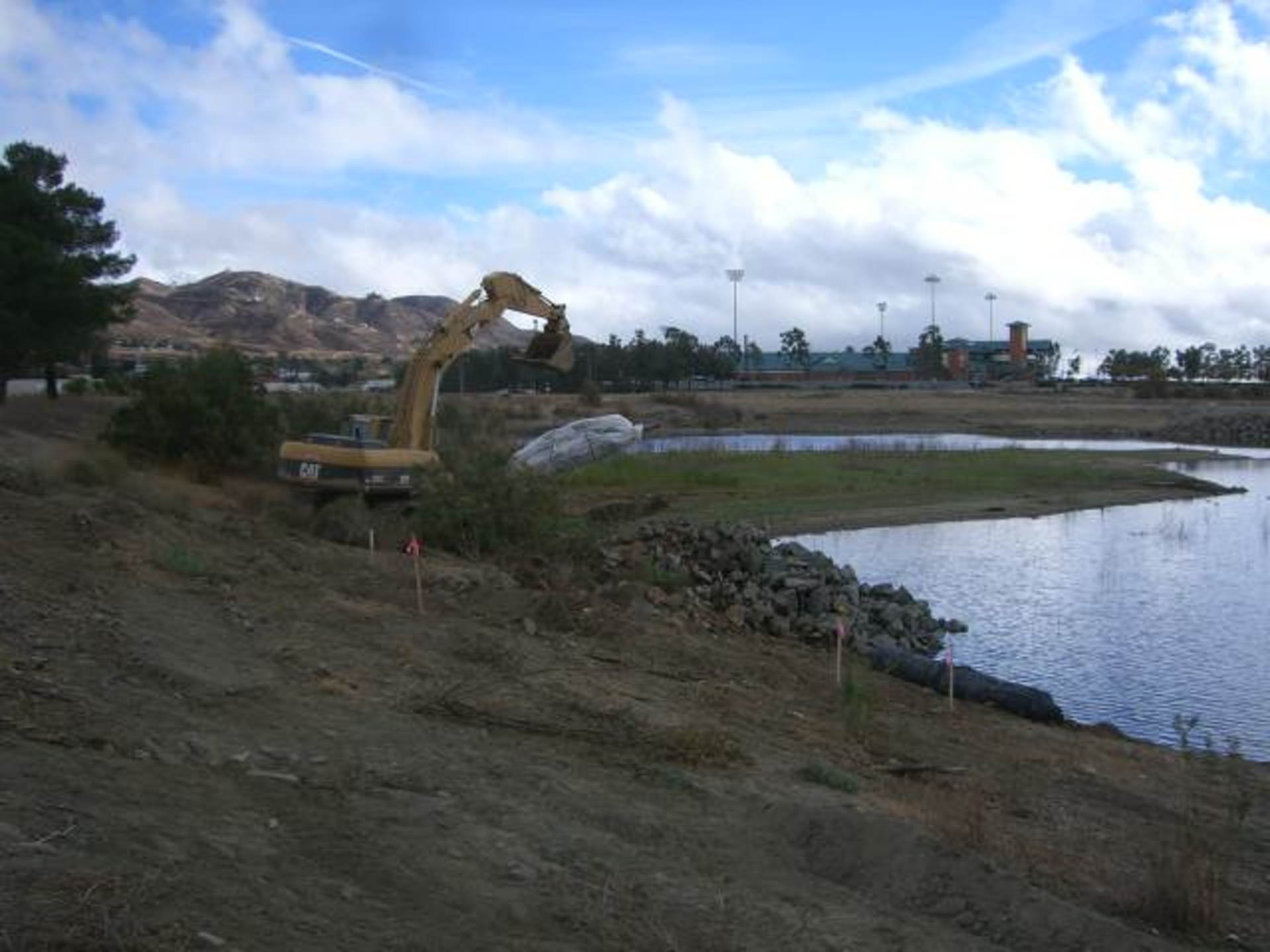
The next AquaDam is on its way. AquaDams come shipped rolled-up like a carpet roll on a wooden beam, wrapped in a protective covering, and have lifting ropes/straps.
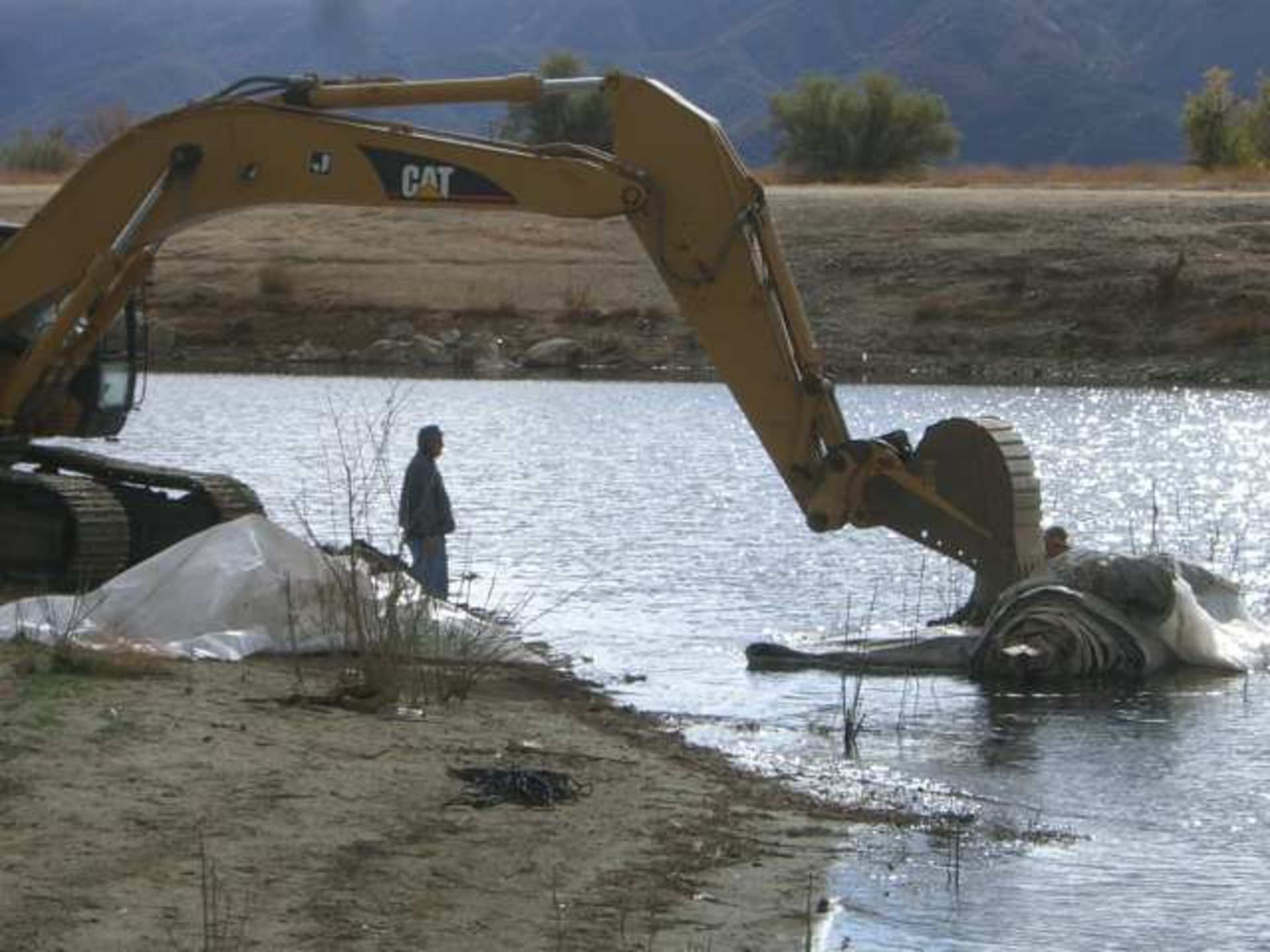
AquaDams are made of lightweight flexible materials and will float when empty in deep enough water. The excavator is pushing on the AquaDam to move it to deeper water so that the roll end will float.
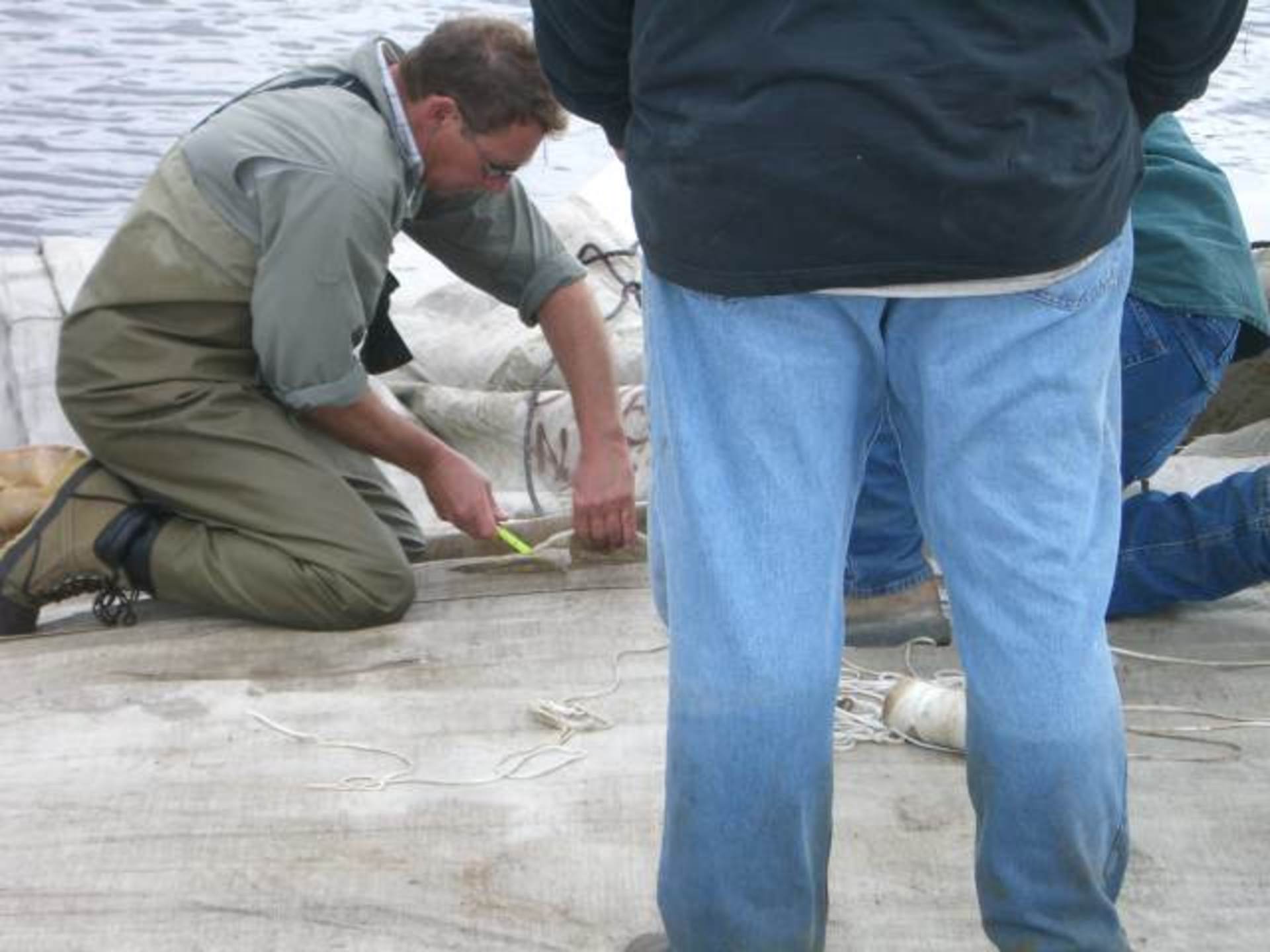
Workers are tasked with cutting holes in the connection collar to allow the fill-tubes to be pulled through. It is crucial that these holes are positioned at the top of the closed end of the first AquaDam and are only made through the collar's material.
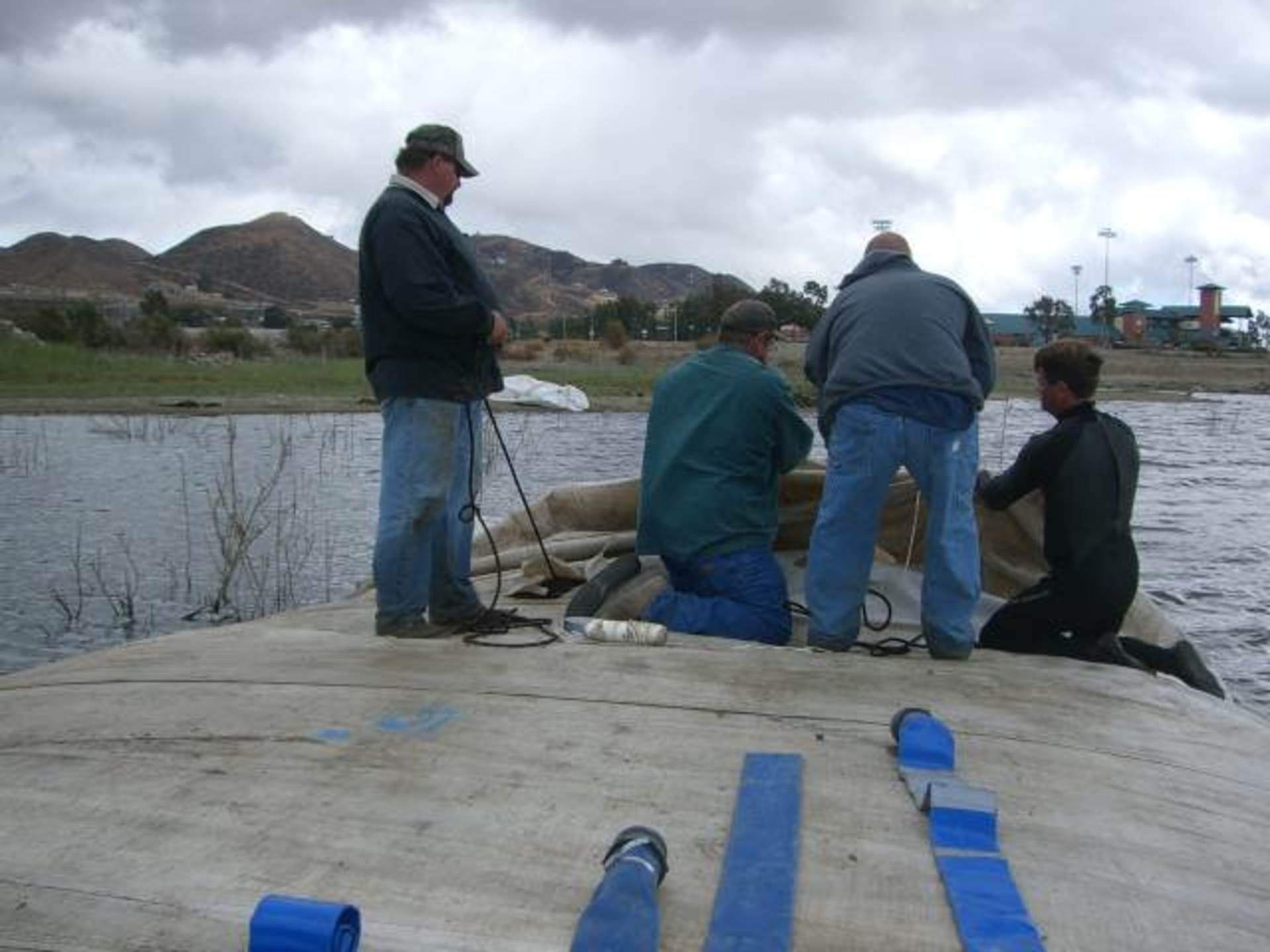
Workers have attached ropes to the fill-tubes to aid in pulling them through the holes in the collar. Meanwhile, additional workers are positioned out of sight, pushing the fill-tubes and open ends into the collar.
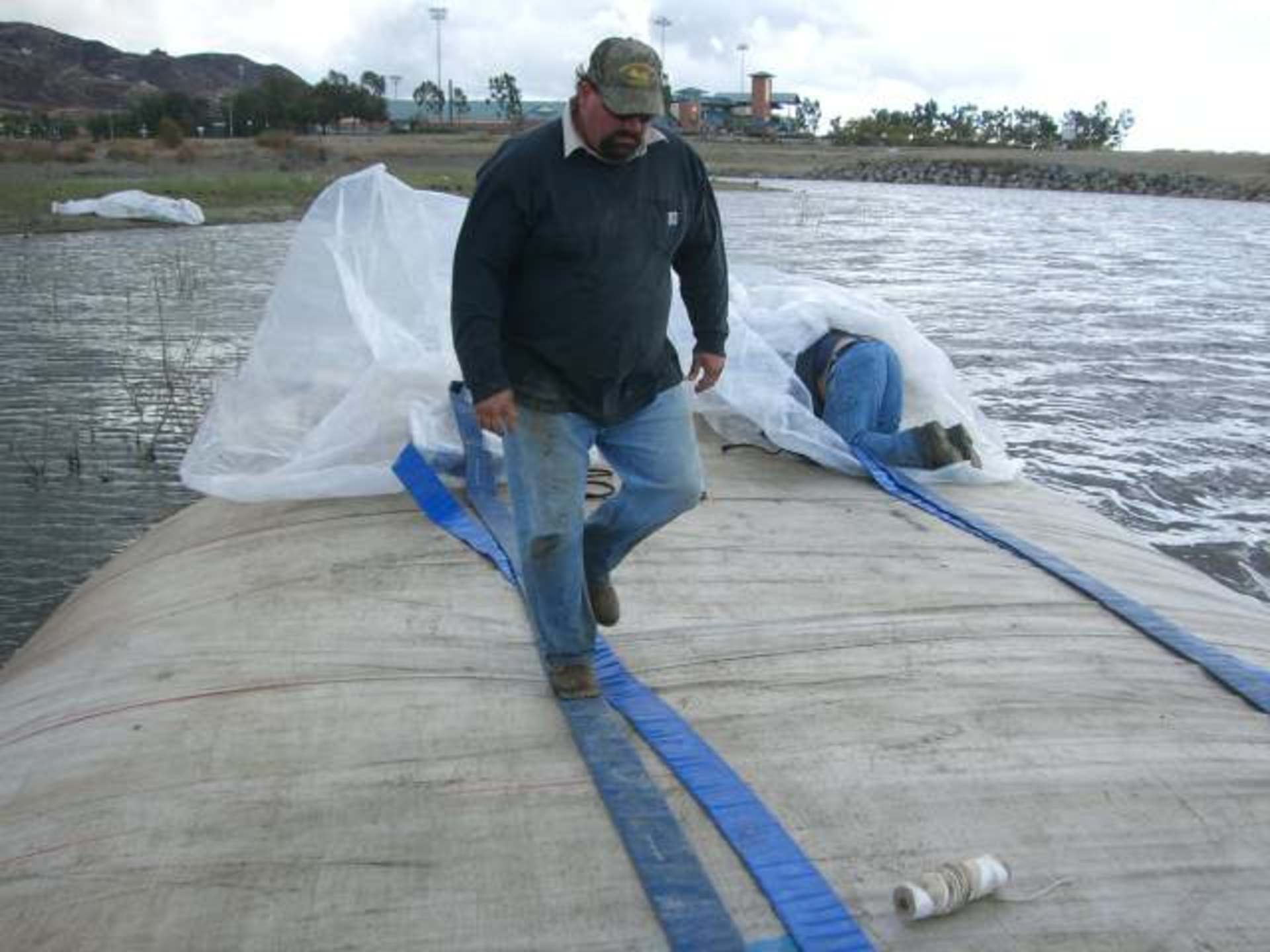
With the fill-tubes up through the holes and atop the first AquaDam, workers were able to insert discharge hoses into the fill-tubes to fill that AquaDam. The ends of the discharge hoses inserted into the fill-tubes must have no connectors and go far enough to reach down the closed end of the first AquaDam.
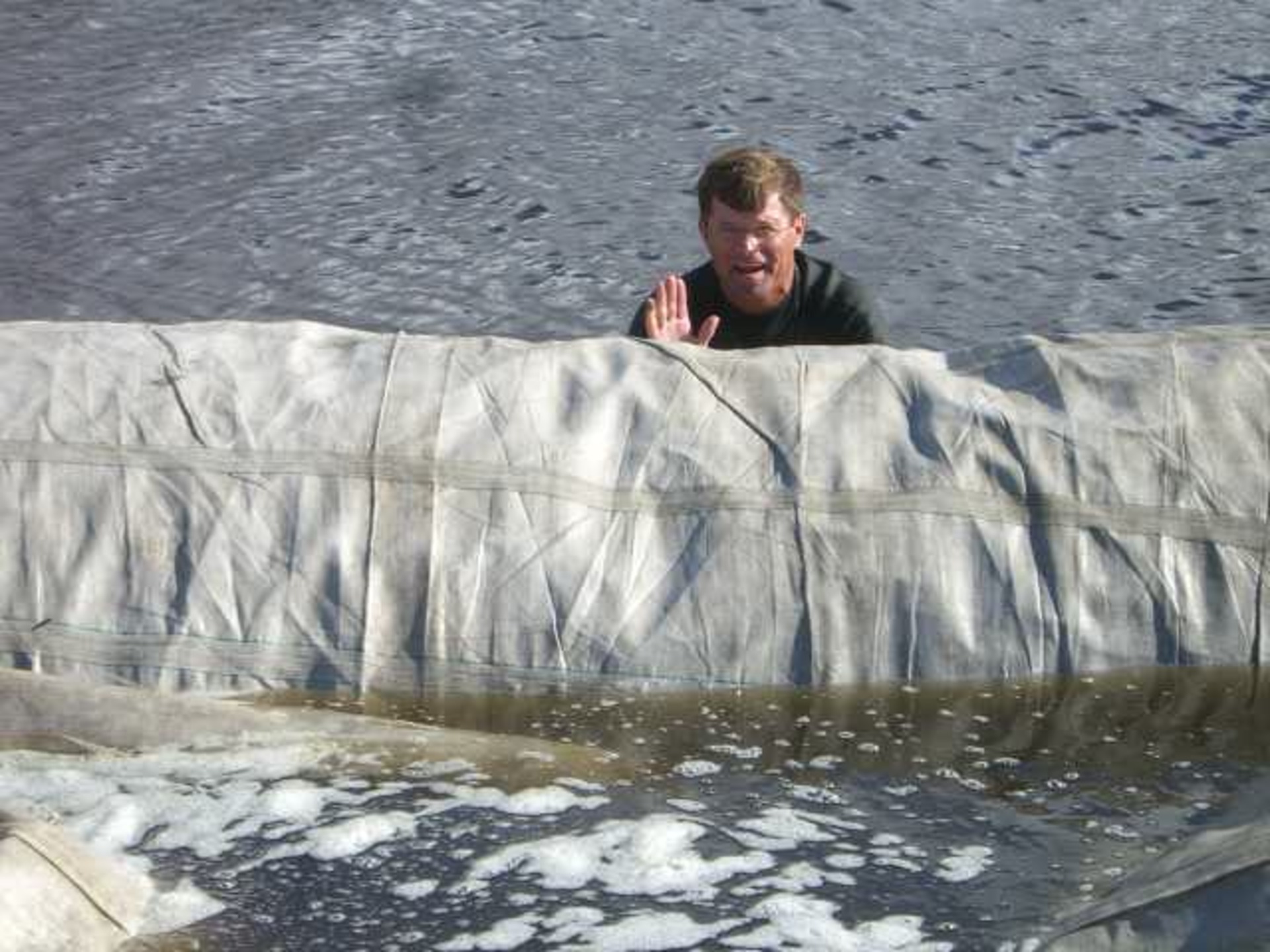
A worker stands proudly behind and holds the roll of the second SCE AquaDam as it is being filled with water.
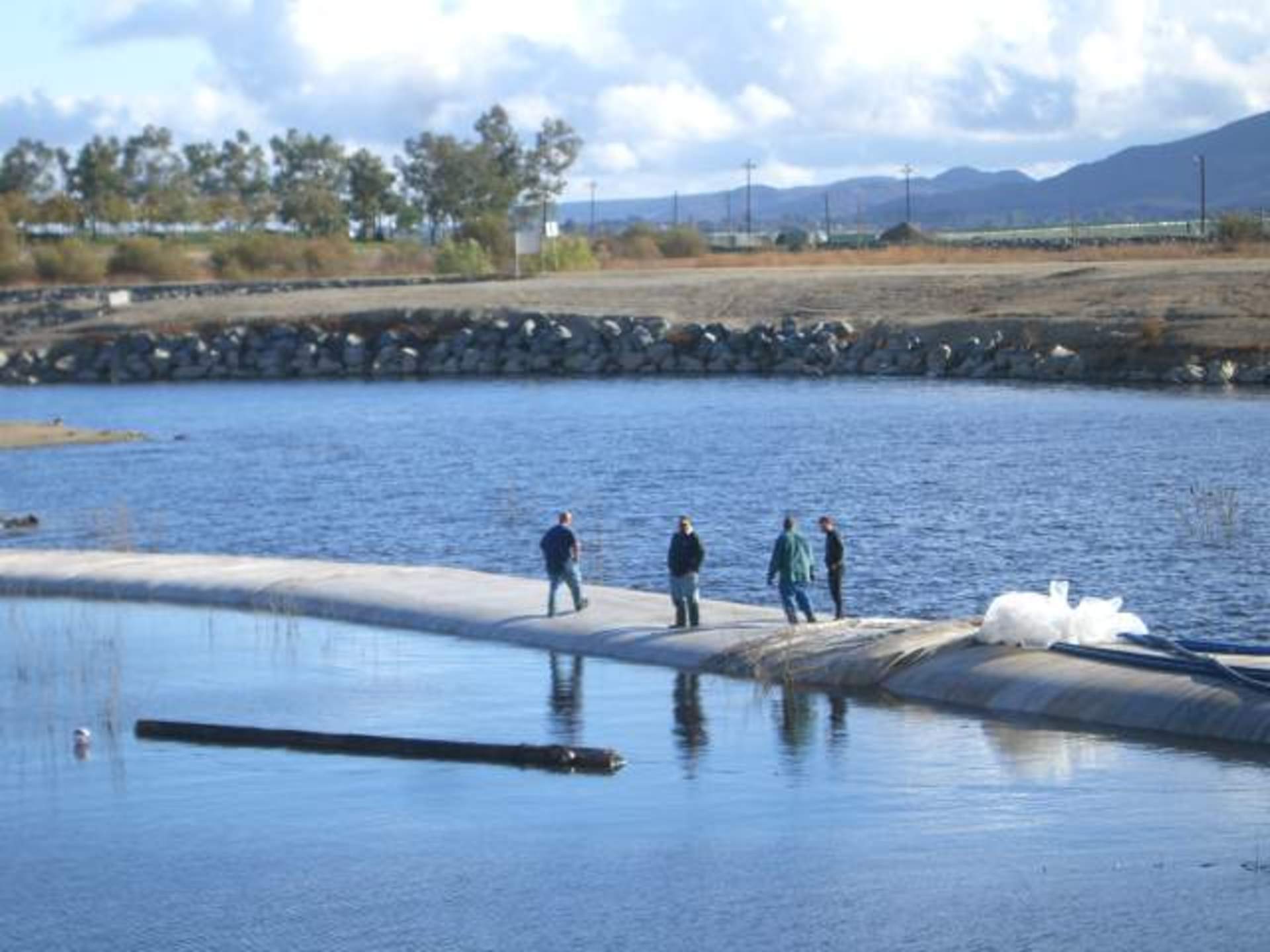
The second SCE AquaDam has been unrolled to its ending bank and is almost finished being filled with water.
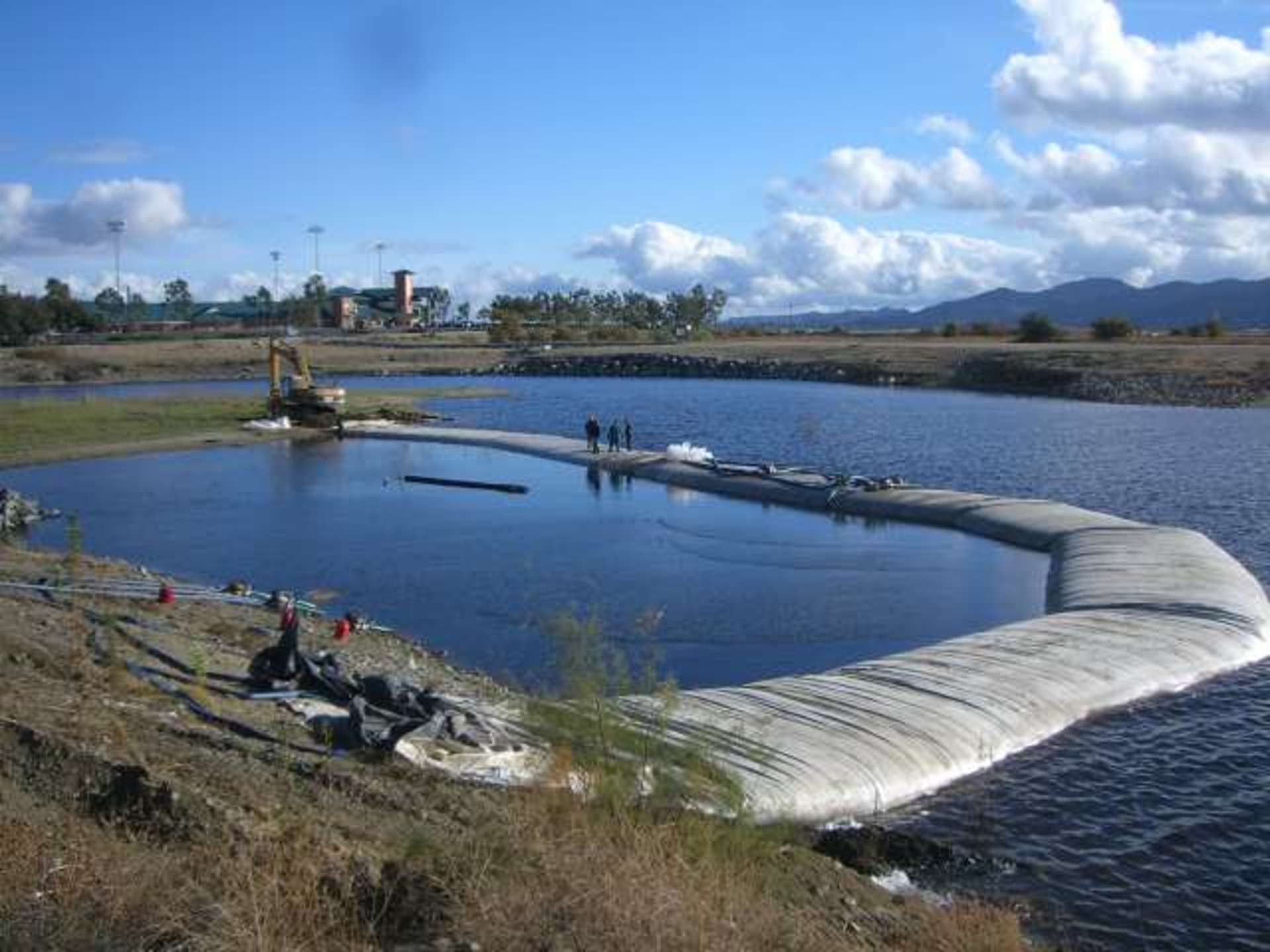
The “L” shaped cofferdam is up and has isolated the shoreline. Notice how smooth the surface of the water is within the AquaDam cofferdam system.

The AquaDam cofferdam system is full of water and workers have begun to de-water the work area. Great job AquaDam!
